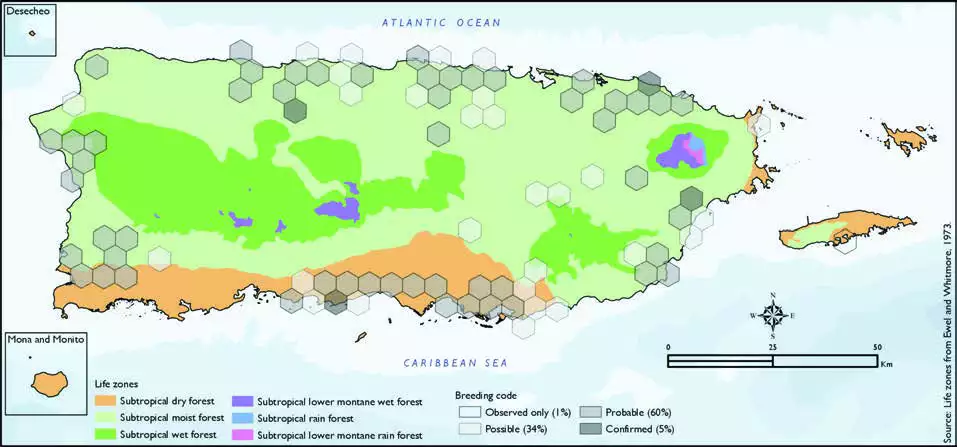Northern Red Bishop
Description
The northern red bishop or orange bishop (Euplectes franciscanus) is a small passerine bird in the family Ploceidae. It is part of the largest genus in the family with over 60 different species. Its sister species is the Southern red bishop (Euplectes orix). This species is most recognizable by the bright reddish orange with contrasting black plumage displayed by the breeding male. It is most common throughout the northern African continent but has also been introduced to areas in the western hemisphere.
This short-tailed bishop is small in size, about 11 cm and weighing about 12-22 grams. The striking red-orange feathers are produced by pigments derived from compounds in their diet. Specifically, the yellow, orange, and red pigments originate from compounds called carotenoids, which are very diet-dependent. Lutein and two red fractions (R1 and R2) derived from lutein are the two dominating carotenoids that contribute to the bird's pigment in the wild. Northern red bishops held in captivity lack the R2 red fraction carotenoid from their diet. This plumage is present on the backside of the male and wraps around the chin to back of the head, throat, and breast, with a dark black crown, forehead, flank, and belly. The tail and upper wings are brown, with pale legs and a black bill.
Distribution & Habitat
The Northern Red Bishop is native to Africa and has been
introduced to some of the West
Indies islands such as Puerto
Rico, Jamaica, Martinique,
Guadeloupe, and St. Croix
(Raffaele and others 1998). Its
popularity as a cage bird has
allowed the establishment of
feral populations worldwide
(del Hoyo and others 2013).
First observed on Puerto Rico in
1971 (Raffaele and Kepler 1992),
it is uncommon in the north
coast from San Juan to Arecibo
and favors mostly sugarcane
fields bordered by grassy
edges (Raffaele 1983, Raffaele and others 1998) and wet tall
grassy fields of the lowlands
(Oberle 2018). It is considered
a rare visitor, from Puerto Ricos
mainland, on Vieques (Gemmill
2015). The atlas fieldwork
yielded a total of 150 records
within 86 hexagons or 18 percent
of the 479 total hexagons (see
map). Of the 86 hexagons where
this species was found, breeding
met the atlas definition of
confirmed in 5 percent (4) of the
hexagons, probable in 60 percent
(52), and possible in 34 percent
(29), while the species was
observed in 1 percent (1) of the
hexagons but without evidence
of breeding (see map). Northern Red Bishop distribution. The map shows the highest breeding code by hexagon and overlaying the ecological life zones in
Puerto Rico. Note: percentages may not total 100 due to rounding. 233Northern Red Bishop/Obispo Anaranjado

Breeding Habits
The Northern Red Bishop builds a bulky spherical nest, usually in
dense cane or reeds, and often
near water (Raffaele and others
1998). Previously published
reports indicate that breeding
occurs from March to November
(Raffaele and others 1998).
Nevertheless, atlas results show
that this species breeding season
extends throughout the year,
with the most breeding activity
from May to August (see chart).
The breeding activity peaks in
June, and it mostly takes place in
the subtropical moist forest life zone (see chart). Results show
that this species breeds mostly
within the subtropical moist
(69 percent of the hexagons) and
subtropical dry forest life zones
(30 percent of the hexagons)
(see table and map).
Conservation
The global population size of the Northern Red Bishop has
not been quantified or assessed,
but the species is described
as common to abundant
throughout its distribution range
(Urban and others 2004). Due
to the lack of evidence for any declines or substantial threats,
the current population trend is
suspected to be stable. This
species is currently listed as a
species of least concern by the
IUCN (BirdLife International
2018). Locally, this species is not
listed in any of the threatened
categories of PRDNER and
USFWS. In Puerto Rico, the
Northern Red Bishop has a
protected habitat in land of
9 percent or 172 km2 of the total area covered by the hexagons
where evidence of breeding
was found for this species
(2009 km2).
Related Species
Family:
bishop